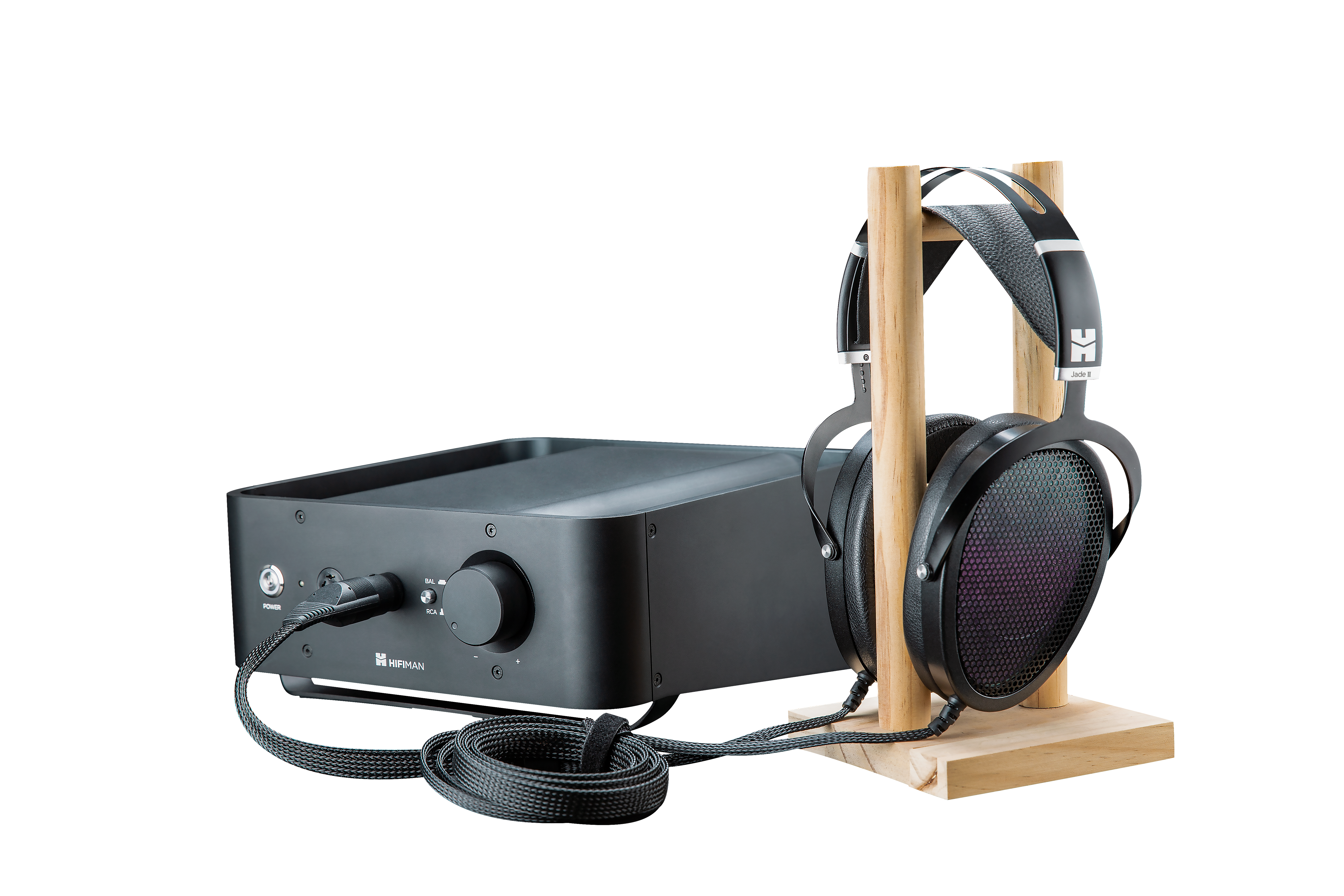
We review a lot of audio gear at Mac Edition Radio, but few pieces of equipment attracted more interest than the newly announced Jade II Electrostatic headphones and Amplifier. We first met Dr. Bien Fang when he had a small booth at the 2011 CES show, and gave me a small gift of the $39.00 HM-101, a small entry-level USB 16/48 DAC/headphone amplifier. Now, working with technology that seems light years away, the reintroduced Jade II Electrostatic Headphone and Amplifier offers a new awakening to the electrostatic model for 2019 for HIFIMAN. This is part one of a two-part review.
As audiophiles know, there are three types of drivers used in earphones and headphones. The most common of those is dynamic, basically small traditional speaker elements.
Next are planar magnetics, once a rarity, but now becoming far more commonplace. Planar drivers are arguably what put HIFIMAN on the map (their HM-801 Portable Music Player was a pioneering product as well), and feature a flat panel membrane with a magnet trace on the membrane for an open sound with a wide soundstage. One advantage of planar drivers is the lack of need for auxiliary power. Early designs were power hungry, weighed a ton, and as our editor Nancy Burlan once opined, looked like pver-ear waffle irons. Newer designs are available with either closed or open backed designs, and efficient enough to work with your phone.
Now, we step up to electrostatic designs. Similar to the planar design, electrostats utilize a flat transducer, a metalized film often made with Mylar, which vibrates due to the magnets that surround it. The film is very thin, and lightweight, so that it can respond almost instantaneously, and thus reproduce transients with sublime speed.
If you're thinking that there must be a catch, you would be right. To keep that membrane in a ready state, high-voltage bias current must be applied to energize them, so portability isn’t usually the norm. On the other hand, at the expense of portability, users are rewarded with lightning-fast response times, along with an open and airy sound, the phones seeming to disappear as you listen. This isn’t HIFIMAN’s first rodeo, and the Jade II unsurprisingly follows the original Jade, which debuted in 2008 under the name HE-1.2.
Electrostats earned their reputation with the now legendary price-is-no-object $59,000 (for the updated E1 version) Sennheiser’s Orpheus headphone and amplifier, and studios around the world were stocked with Stax’s product line as reference monitors, among others. In the past, electrostats were shockingly expensive, over $1,000 dollars but with bleeding-edge technology. Skip to 2019, and the Jade IIs run about $2,500 ($2,499.99, but who’s counting?) coupled with their dedicated amplifier and power supply. Still over a grand, but a grand doesn’t seem too shocking today. Not with substandard Beats headphones selling for just under $500. HIFIMAN wasn’t about to let Sennheiser rule the ultra-high-end, so they introduced the HIFIMAN Shangri-La SR Electrostatic Headphones and Amp System, at the $50,000 price point.
Still, $2,500 is a serious chunk of change, and they represent HIFIMAN’s entry-level price point. These headphones aren't for the average user, and with the complete lack of portability and wireless operation, most users will end up tethering them to their computers, feeding them through a high quality DAC and headphone amp with analog outputs, as analog audio is the only source the Jade II will accept. Happily, you have a choice of RCA or balanced XLR inputs. As with all things analog, the quality of cables, quality of line level amplifier, all matter, so your mileage will vary.
For our testing, we used a variety of source files, including DSD from Blue Coast Records (a shout out to the amazing Cookie Marenco and her team), high-res audio from Chesky Records (a shout out to Jeff Lanier, and David and Norm Chesky), and a wide variety from Omnivore Records, Universal, and other labels. Most of the files were high-resolution, but many were CD quality; some were studio0provided MP3s and Qobuz High-Res streaming.
To handle all those sources, we chose Amarra Luxe 4, which is now configured for Qobuz natively, as well as all the sources, sampling rates, and formats you can think of. For the decoding and line level amplification, we turned to our beloved Oppo HA-1, Headphone Amplifier and DAC, using the RCA outputs to the inputs of the Jade II amp. Whew!
I should note that the Oppo HA-1 allowed us to do something we have been wanting to try for quite some time: running two different types of headphones at the same time from the same chain. Using the line-level outputs on the HA-1 to the Jade II meant that we could drive the superb new Audio-Technica ATH-ADX5000 headphones from the front phone jacks of the HA-1. I don’t have the memory of audio when I switch headphones, and start a track over again, trying to recall nuances. You don’t need to remember nuances as often as you do with these two headphones, as they are far beyond even typical high-end models.
The Audio-Technica ATH-ADX5000 headphones are their new flagship models, and like the Jade II, they are pricey, at $2,000 dollars a pair. The Jade II headphones alone run $1,399, and the amplifier is $1,599. The Jade II at $2,499 is touted as “Classic Electrostatic Performance at a Real World Price.”
How did they sound? How did they fit? Were the Dekoni Audio Nuggets Headphone Headband Pressure Relief Pads helpful? Any muss or fuss? Read all in part two, coming soon. Spoiler alert: these are some mighty fine headphones.
Harris Fogel and Nancy Burlan, posted 6/10/2019
For more information on the HIFIMAN Jade II Electrostatic Headphones and Amplifier visit: http://HIFIMAN.com/products/detail/298
For more information on the Dekoni Audio Nuggets Headphone Headband Pressure Relief Pads visit: https://dekoniaudio.com/product/dekoni-audio-nuggets-headphone-headband-pressure-relief-pads-4-pack/
For more information on Chesky Records visit: http://www.chesky.com/
For more information on Blue Coast Records visit: https://bluecoastrecords.com/
For more information on Qobuz visit: https://www.qobuz.com/us-en/discover



